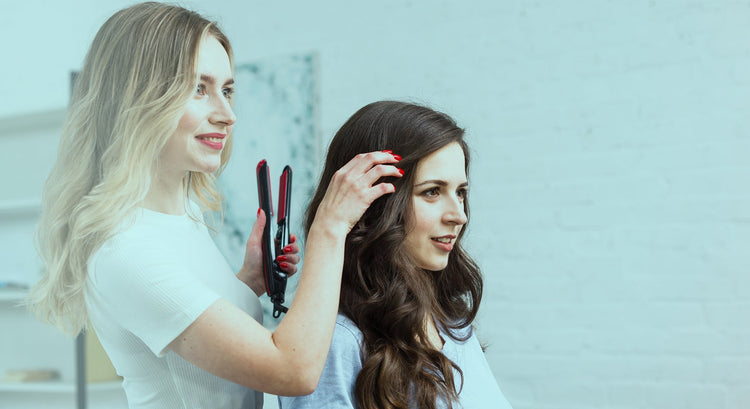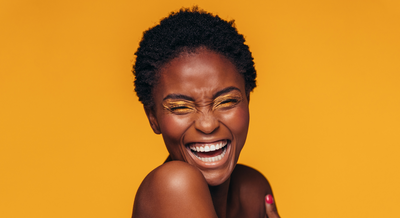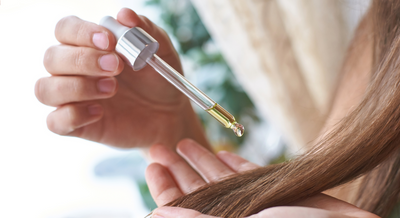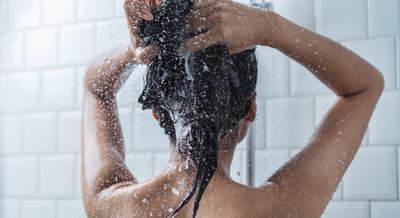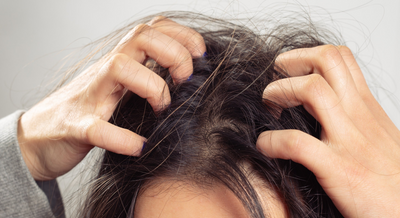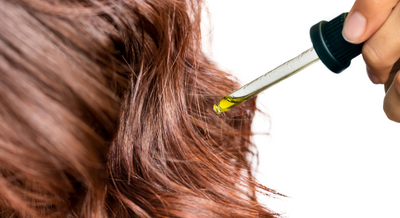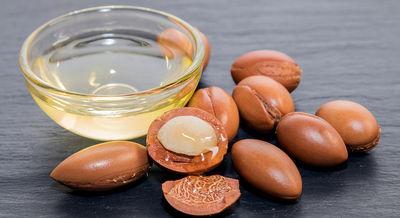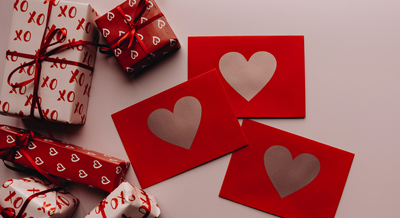Without a proper understanding of how heated styling tools work, they can wreak havoc on your hair instead of styling it to perfection. The extreme heat used by some styling tools can break your strands and permanently burn them. Therefore, it is vital to be aware of the cons and safety measures to prevent damage, especially for amateur users.
For every type of hair, there is a different heat setting that is preferable. For every type of heating tool, the selection of the temperature depends on many factors. Here are some considerations on which it depends.
Factors on which the temperature selection depends
It is important to understand your hair type and texture before picking a temperature to set your styling tool to. Picking the right temperature will save your hair from being unnecessarily damaged, or it will save you time if you have been picking a temperature that is too low for your hair type. You have to consider some elements before the selection. Here are some:
1) Hair texture
Hair texture or diameter defines how strong your hair is against challenging external conditions. If your hair is thick, then this means that the cells of your hair have a greater number of protective outermost layers. These additional layers protect the core of the hair from heat or any other force. Therefore, thick hair can hold up well against high heat.
On the other hand, thin hair has a lesser number of outermost protective layers, so; they are less resistive against higher temperatures.
2) Moisture content
As we know, water absorbs heat and changes its elemental form from liquid to vapors. If your scalp produces a considerable amount of natural oils or moisture, then your hair is less likely to get burnt. The moisture acts as a protective coating and safeguards your hair from intense heat.
If your hair lacks sufficient moisture, you should not put them through harsh temperatures while styling.
3) The health of your hair
Healthy hair has more tendency to resist heat. While unhealthy hair will burn faster. If your hair is already damaged from overusing heating tools, then it is better to stay away from further styling as much as you can.
4) The natural condition of your hair and scalp
For genetically dry hair, you cannot use much heat. Choosing lower heat settings is the best way to heat style when you have more dehydrated hair naturally. Exposing already dry hair to extreme heat may leave your strands broken, dull, and lifeless in no time.
5) Hair products you are using
The type and the number of hair care products you are using matters. If you have color-treated hair and you don’t want your hue to change much, then exposing it to heat is not a good idea. Whether you can heat-style or not depends entirely upon the quality of the product you have used.
The presence of extra conditioner and shampoo during the heating process may spoil the whole style. So, be sure that you have gotten rid of extra built-up products. The best way is to wash your hair with a deep cleansing shampoo to break down the additional product build up.
6) Medical conditions
In case of some medical conditions like alopecia areata and albino pigmentation, you should consult a doctor first. Hair is oftentimes more sensitive with these conditions, so it is wise to avoid exposing them to heat.
Heat indexes for some heat styling instruments
To avoid scorching your hair, you have to know the temperature limitations that you must not cross for each of your heated styling tools. Heat-styling can be part of your daily ritual, so it is best to play it safe with these devices.
1) Blow dryers
Hair Dryers typically heat to between 80 and 140 degrees Fahrenheit. With maximum heat, it can reach an extreme temperature like 140 degrees, which is enough to bake not only your hair but also the skin on your scalp. Stylists usually suggest keeping the setting on a moderate-high setting. It will dry your hair faster without any prominent damage.
There is a relation between the fan speed and the amount of heat your dryer produces. The higher the speed, the faster your hair will dry. If in case the fan speed gets low, but heat remains at maximum, then it increases the chance of your hair to get burnt.
if you have the extra time, halfway dry your hair with a blow-dryer to clear out extra water. For the remaining moisture, let it air dry the rest of the way.
A modern curling tool will have variable heat options for you to choose from. The temperature selection depends on the type of hair you have. A standard iron has a range of 125 degrees to 425 degrees Fahrenheit. For thick textured hair, you can go for a high temperature between 200 to 300 degrees. While with thin textured hair, it is best not to go above 200 degrees because of their sensitivity.
3) Flat irons
Straightening your hair requires more heat than curling. So, flat irons work on higher heat levels in comparison to curling irons. Straighteners often work between the range of 250 to 425 Fahrenheit. So, for every type of hair, it is suggested to remain below the 300-395 degrees threshold. Otherwise, you will burn away your beautiful strands.
For thicker hair, the range of 300 to 375 is safe. While for thinner hair, remaining below 290 degrees Fahrenheit is ideal. If your hair is not healthy enough or is damaged, then staying away from flat irons is the best solution.
According to some stylists above 451 degrees, your hair starts to melt. Therefore, staying away from that figure is crucial.
Your heating tool may get hotter than It is supposed to
The malfunction of the temperature controlling dial may cause trouble if you don’t notice soon enough. The dial may show a lower value for temperature than its actual value. In this case, you may want to replace it as quickly as possible before it does any more damage.
The heating plates existing inside the instrument may stop working correctly. In this specific case, you might notice faster because of the abnormally generating heat levels. The plastic coating getting dangerously warm is another sign of instrument breakdown.

